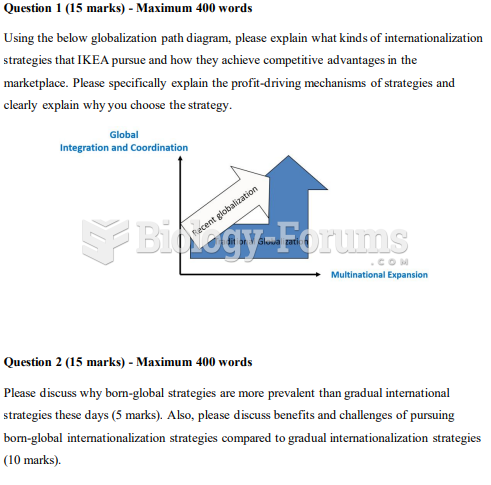Answer to Question 1
a. International strategy: Companies adopt the international strategy when they aim to leverage their core competencies by expanding opportunistically into foreign markets. The international model relies on local subsidiaries in each country to administer business as instructed by headquarters. Some subsidiaries may have latitude to adapt products to local conditions as well as set up some light assembly operations or promotion programs. Still, ultimate and absolute control resides with managers at headquarters who reason they know best the basis and potential extension of the company's core competencies.
b. Multidomestic strategy: A strategy in which the company allows each of its foreign country operations to act fairly independently, such as designing and producing a product or service in France for the French market and in Japan for the Japanese market. The main reason for adopting a multidomestic strategy is that in some cases, cultural, legal-political, and economic conditions may dictate very different optimum operating practices from one country to another.
c. Global strategy: A strategy in which a company integrates its operations located in different countries. For example, it might design a product or service with a global market segment in mind. Or it might depend on its operations in different countries to produce the components used in the products and services. In this type of company, managers in the company's home country essentially develop capabilities and make decisions to diffuse them globally.
d. Transnational strategy: A strategy in which a company develops different capabilities and contributions from different countries and shares them in integrated worldwide operations. In essence, this is a hybrid of multidomestic and global strategies in that the company attempts to gain the advantages of both. This strategy is ideal for companies that gain a great deal from global integration and need a great deal of adaptation to local markets. Such industries as pharmaceuticals and automobiles fall into this category.
Answer to Question 2
A







